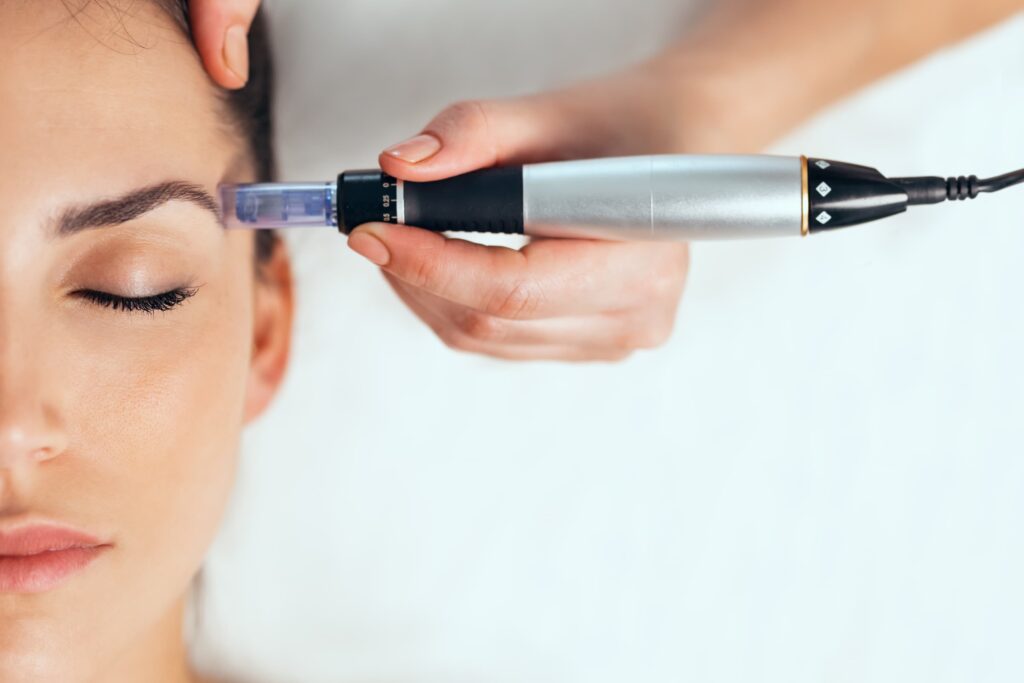Microneedling has received a lot of attention recently, as patients and practitioners realize the potential of this minimally invasive technique. While results do vary, it is becoming clear that this process has huge potential for healing and rejuvenating skin. Add to that low downtime and low potential complications, and you have a recipe for popularity. But buyer beware!
Microneedling involves using a specialized device with multiple fine needles of varying lengths to create tiny puncture holes in the skin. These microscopic wounds stimulate the skin to heal itself, provoking a collagen response and ultimately a better looking result. In some cases, those tiny holes can be used as a drug delivery system to help topical products get deeper into the dermis itself.
As with all popular techniques, there is a lot of variability in how the procedure is delivered. For one, the devices themselves vary tremendously. The biggest factor is the depth of the needles. Most facial skin varies between 0.8 and 1.3mm in thickness (except for eyelids which are thinner), and many devices only go to 0.4mm of depth. While this still produces some effect, it is unlikely to generate the result that everyone is talking about and expecting. Microneedling devices for home use generally fall into this category, with a very narrow therapeutic window.
In order to get a full microneedling treatment, you would need to consult with a trained practitioner who has access to a credentialed device. This may be either an aesthetician or a physician, but in most states, it is meant to be a medical professional in particular. As with most minimally invasive treatments, it is easy to underestimate what potential the procedure has for good or for harm. It is usually safest to have the most highly trained practitioner possible performing the procedure, especially when the treated areas are so close to nerves, and when the potential for scarring exists. Furthermore, there are patients who should not receive this treatment because of their personal medical history, and a licensed physician is more likely to explore this history, than a cosmetologist who does have that habit.
The other thing to consider is the variability between the devices themselves. While most are made to slide on the skin, they all have different mechanisms by which the needles poke out, and different speeds at which they do. Few have built-in stops in case the device is mishandled, without which you could be producing a complication instead of a healthy glow. All in all, microneedling is proving to have a wide ranging potential, from acne scars to fine lines. In short, everyone wants some for something. But one of the most dangerous things you can do is to underestimate a procedure just because it is “minimally invasive.” If the needles are penetrating deeply, then best to have it done by someone with actual training in anatomy and surgical scarring. If they are only gently scratching the surface, then what’s the point? And either way, it is probably not best to self-administer this treatment. Things usually turn out much better when the patient can relax and the proper professional can concentrate and treat. After all, minimally invasive is still invasive; and that many needle sticks is nothing to underestimate.


